REVOLUTION & FREEDOM OP-ED (PART THREE)
Revolutionary or emancipatory consciousness and activity: From Rivonia to the 1976 uprising
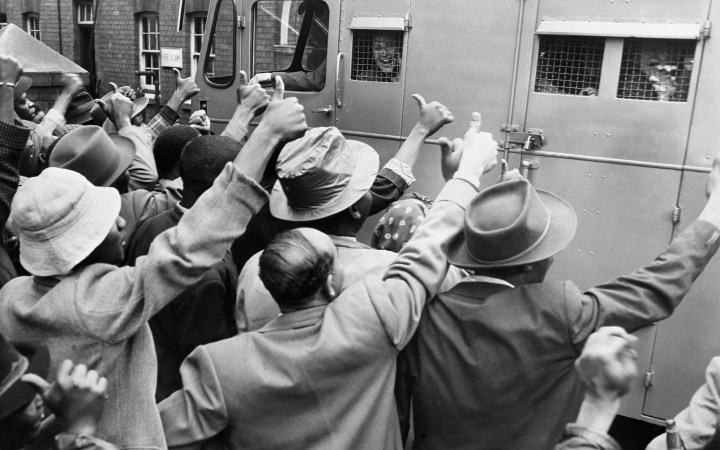
Not everyone who wanted to assist the ANC could make formal contact with the organisation and be formally inducted as a member. There was, however, a category of people who tried to act as the ANC required, learning what they could of ANC directives and performing as an ANC cadre or activist was expected to do.
This article and those that precede and follow it concern revolutionary (or emancipatory) consciousness and revolutionary activity in the context of the South African struggle for freedom (see Part One here and Part Two here).
This is a struggle that has passed through various phases and continues to change since the aspirations of the oppressed for freedom continue to elude them, even after the inauguration of formal democracy in 1994 and the adoption of a pathbreaking Constitution in 1996.
The ways in which those committed to this democratic revolution act out their beliefs have changed over time and continue to change, albeit without clarity as to what that means at the present moment, to which I will return.
This is not a chronological history, but a thematic analysis of the challenges that arose in different periods. In the present article, the devastating impact of the banning of the ANC and PAC and the Rivonia Trial are considered. The rebuilding of the ANC as an underground and exiled organisation, together with the rise of black consciousness (BC), a key factor in the 1976 uprising, is then outlined.
The period after the banning of the ANC and PAC in 1960 was difficult for the organisations. (The Communist Party had dissolved itself in 1950 but was nevertheless barred from continuing operating by the Suppression of Communism Act which also limited the political actions of “listed” communists. It did in fact reconstitute itself underground as the South African Communist Party (SACP) in the early 1950s. See Raymond Suttner, The ANC Underground, 2008, chapter three).
The bannings created disarray in that the transition from operating legally and openly to being an illegal organisation was one for which members of organisations were unevenly prepared.
I deal almost entirely with the then ANC and its allies because I am not a specialist on PAC history. I believe, nevertheless, that despite its current minuscule presence in public life, its history needs to be more extensively recorded.
I deal with the black consciousness movement (BC or BCM) not in detail as a historian of BC ought to do, but insofar as it stepped in to fill a gap in the public terrain after the banning of the liberation movements, but also became a force in its own right. I also focus on the relationship between BC and the ANC, especially their links and convergences, that occurred inside the country, in prison and in exile.
In the case of both BC and PAC, the strength of their influence cannot simply be assessed by electoral performance or the number of members. Both Africanism and black consciousness are powerful ideological and cultural trends that continue to have an influence on many black people, including within the ANC. (The way I use the word “black” derives from the BC influence replacing “Non-White” with black, taken to refer to Africans, Coloureds and Indians).
Many found it hard to make the transition to operating illegally, still having a sense of pride in wearing Congress colours, which was obviously impermissible and not possible for those operating illegally. There were other manifestations of this uneven transition, with some continuing to take minutes of meetings. (See Suttner, The ANC Underground, 29-30).
The period of illegality and especially from the Rivonia Trial of 1963/64 until the 1976 uprising is a very complex one. To assert its complexity is in some ways a questioning of the habit of referring to decades as encompassing one or other singular character and excluding other features, for example, a “decade of legal struggle” or “decades of non-violence”, or “decades of petitioning” in the case of early reactions to the creation of the white Union of South Africa.
In fact, every period of resistance from 1910 onwards (following long wars of conquest and resistance) combined different forms of struggle as in moments of defiance coexisting with petitioning the King or singing Nkosi Sikelele iAfrika and also God Save the King/displaying the Union Jack (which I have argued can, in some ways, be read as resistance, “divide and rule” in reverse, pledging loyalty to the British in opposition to the white settlers/conquerors) (See Raymond Suttner, “The African National Congress centenary: a long and difficult journey”, International Affairs, 88, 4, (2012), 719-738, at 723-25, available on request.)
In the same period of petitions there was a famous women’s march of defiance in Bloemfontein in 1913, preceded by others going back to the 19th century (Nomboniso Gasa, “Let them build more gaols” in Nomboniso Gasa, (ed) Women in South African History, HSRC Press, 2007, chapter 5 and from a different angle, which Gasa critiques: Julia Wells, We now demand! The history of women’s resistance to pass laws in South Africa. Witwatersrand University press, 1993).
There are many other examples of multiple forms of struggle being pursued by the ANC, whose membership and activists often did not conform to what was – constitutionally – supposed to be only African men. (See “The African National Congress Centenary” at 723, on women being de facto members and within a much broader enquiry, Peter Limb, The ANC Early Years. Nation, Class and Place in South Africa before 1940. Unisa Press: 2010, at 120-122, 244. I do not have the references at hand, but Coloured people were also members at times. I am fairly sure that it is documented by Peter Limb.)
What is very clear and it is also so for earlier periods, is that there were a number of ways of pursuing struggle, and consequently, distinct but also multiple political identities coexisted before and within the period 1963 to 1976.
In the aftermath of the Rivonia Trial and other setbacks, many leading figures at all levels of the ANC, SACP and the then trade union ally, the South African Congress of Trade Unions (Sactu), were arrested and some died at police hands under the newly introduced 90-day detention law, one of the first being Solwandle Looksmart Khulile Ngudle (and some were hanged, like Vuyisile Mini.
Mini was a trade unionist and composer and singer. He and his comrades, Wilson Khayinga and Zinakile Mkaba, acted within the traditions of bearing themselves proudly and defiantly (referred to in Part Two), even when facing death, and sang freedom songs on the way to the gallows.
Mini composed the famous song, “Pasopa nantsi ’ndondemnyama we Verwoerd” (“Look out/Pasop Verwoerd, here are the Black people,” changed to Vorster and Botha later.) Versions of the song were recorded by Lalela Cape Town Choir and by Miriam Makeba and Harry Belafonte.
In much of the literature, it is argued that the banning of the ANC in 1960 and the Rivonia Trial of 1963 saw a period of invisibility of the ANC. My evidence points to the ANC never dying or stopping operating inside or outside the country during this period; that is wrongly depicted as one of “quiescence” (Suttner, The ANC Underground, chapter 4 and leading historian Leonard Thompson quoted using the word “quiescent” at 59. See also 81-83).
Many people were arrested in the swoops after Rivonia. But many were not and some of these were engaged in rebuilding the ANC as an illegal organisation, conducting underground activities in places like Soweto with Ma Sisulu, Elliott Tshabangu, John Nkadimeng, Nomzamo Winnie Mandela and others, and this was replicated in other parts of the country, notably in the Eastern Cape.
In this period, it is true that the public space was no longer open to the ANC as the ANC. This doesn’t mean that some people who were ANC supporters or members did not participate in the public sphere, but they did so because they also bore other identities, in the religious domain as professionals, educators and other forms of intervention in public life.
Rupture and continuity
What happened in 1960 was shattering. But history shows that there was some element of preparedness for illegality and underground work, notably the M-Plan in the 1950s, sometime before the launch of MK. (See The ANC Underground, chapter two). There was, at the time, some informal discussion of the need for armed resistance.
We also know from Nelson Mandela’s autobiography, Long Walk to Freedom, that in the 1950s, when Walter Sisulu visited China, he and Mandela agreed that he should ask whether they would supply arms to the ANC. The Chinese declined, arguing that they would not supply arms until they were sure that the ANC was ready for that.
There were also situations before the formal decision to establish MK when sporadic acts of sabotage were committed by members or supporters of the ANC so that people like Mandela feared that the leadership could be outflanked by their own membership if they didn’t move towards taking up arms.
In the period after 1963, it became very important for those who had a legal identity to retain that identity insofar as that legal identity (meaning not as a lawyer but as in abiding by the law) could advance the Struggle.
In the case of Bram Fischer, he was a Queen’s Counsel and pursued his job as an advocate until he was arrested and sentenced to life imprisonment, dying a prisoner in 1975. (He contracted cancer and was treated in a very neglectful way in prison. See Denis Goldberg, The Mission – A life for freedom in South Africa, STE publishers, 2010, 173-189. He was released into the care of his brother, but technically remained a prisoner and when he died the prison authorities buried him without consultation with his family.)
Rebuilding as an underground organisation
At the same time, many people were engaged in trying to rebuild the ANC as an underground organisation and they drew on the veterans who were still in place, who tried carefully to choose reliable people whom they knew and young people who could be drawn into their circle to discuss ways of rebuilding the ANC under the new conditions of illegality. (The ANC Underground, chapters 1, 4 and generally. The multi-volume South African Democracy Education Trust project covers this history in far greater detail than I was able to do and there are separate volumes of important interviews. The first volume, entitled The Road to Democracy in South Africa, 1960-70, ed Bernard Magubane, covers similar ground to this article, but with additional evidence.)
At the same time, the ANC leadership that had not been arrested or had not remained in the country as underground workers established the organisation’s presence outside the country in Tanzania and later in Lusaka, with offices in London and other countries gradually set up.
It’s important to understand that when one speaks of distinct identities, like being an underground worker, a person observing legality or a member of MK, or a diplomat located outside, one is often artificially breaking up activities that these people in fact engaged in as single individuals.
In addition, much of what was done by MK or other underground workers inside the country was initially conceived outside the country or was planned through discussion between people outside in exile and those who were inside the country.
I say this partly to correct a binary that is popular in some scholarship to the effect that “MK never freed the country” or “the exiles didn’t free the country. It was really the people inside” – sometimes referring to popular power, but in many cases, it’s also attributed especially to organised workers.
I think it’s very important that we don’t work with binaries, that we understand that those very workers were often also simultaneously underground operatives of the ANC or the Communist Party and that even if they were in affiliates, of Fosatu (the Federation of South African Trade Unions, one of the key predecessors of the Congress of South African Trade Unions, Cosatu), that was not affiliated to the United Democratic Front (UDF), many of these people did get involved in the UDF or in the ANC/SACP through one or other way.
And over time in the period leading up to 1976, but especially afterwards, if I might run ahead, the strategic insights of the ANC in exile were very important for what was done inside the country by underground workers and by publicly known activists as the space was gradually opened.
It’s a mistake to think that the ANC in exile was out of touch with what was happening inside the country, and this knowledge was increased over the years as more and more contacts between “inside” and “outside” were made.
As someone who was working inside the country, I can say that the guidance that we received from Radio Freedom, from statements of President Oliver Tambo and others, was often very helpful in guiding us on what to do. It’s important to know that Radio Freedom, especially when it broadcast the January 8 anniversary statement, had something to say for almost every sector of the Struggle.
And people would listen to this very carefully and they would be guided in a general way on where to focus. For example, in one year the ANC declared it to be the Year of the Youth and this led to the proliferation of youth organisations in places where they had not been organised before.
That’s not to say that they were given orders that had to be carried out rigidly in particular sectors of the Struggle. But the strategic insights pointed to the possibility of openings of new fronts that could enhance the attacks on “the enemy”, meaning the apartheid state.
As indicated, it was not an instruction that could be detailed, because it was for the actors, the cadres and activists on the ground to work out how to implement the guidelines that they were given in the conditions that they actually confronted and often, especially later in the People’s Power period, what was done on the ground may have been very different from what was envisaged when the statements from Radio Freedom were enunciated.
Informal ANC activists/cadres
Not everyone who wanted to assist the ANC could make formal contact with the organisation and be formally inducted as a member. There was however a category of people, in my experience, in some bantustans among other locations, who tried to act as the ANC required, learning what they could of ANC directives and performing as an ANC cadre or activist was expected to do. This category of de facto ANC members has received insufficient attention. (See The ANC Underground, at 2, 73-4).
The rise of the black consciousness movement and the 1976 uprising
In the political vacuum created in the public sphere by the bannings, various liberal organisations tended to occupy centre stage as vehicles for protest in the early to mid-1960s. Most prominent were the Liberal Party (that dissolved in 1968 when prohibited from having black members), the National Union of South African Students (Nusas) and the Progressive Party, through its lone parliamentary voice, Helen Suzman.
Although Nusas played a broadly progressive role in protesting repressive legislation, and repeatedly electing Chief Albert Luthuli, the ANC president, as its honorary president, the organisation’s membership was primarily white.
Tensions brewed with the rise of a more assertive cohort from black universities, led by Steve Biko, Barney Pityana and others. This group of black consciousness people, as they came to be known, broke away from Nusas and formed their own organisation, the South African Students Organisation (Saso) and later other organisations associated with it.
Their presence was militant and posed an important challenge to the white students and many of these white students came to be influenced by black consciousness teachings and acquired a greater consciousness of the black voice, especially the African voice in South Africa.
The black consciousness movement was a key factor in that if there was any ideology or any coherent ideology involved, it was probably the dominant one in leading to the 1976 uprising, which initially started around the use of Afrikaans in schools, but was fundamentally, or became, an attack on apartheid in general.
The ANC may not have directly anticipated the 1976 rebellion, but many of the people who were involved in Soweto and other places were in touch with leading ANC figures like Joe Gqabi, Albertina Sisulu, Elliott Tshabangu and others.
And once the rebellion had broken out, they also got guidance from the older generation about what steps to take beyond where they were. (Interviews Barney Pityana, 2003, Murphy Morobe, 2003). And also, the ANC underground assisted when it was necessary for some of them to leave the country. (Suttner, ANC Underground, chapter four).
The 1976 Rebellion became an important landmark in the unfolding of the South African Struggle, breaking a situation where the momentum of the Struggle was on the side of the regime, with the resistance forces mainly restricted to countering their offensives.
The 1976 uprising returned the initiative to the oppressed and opened the way for the later development of the popular struggle in the late 1970s. The very important decade of the 1980s led to ungovernability and the People’s Power period with an understanding of working towards insurrection.
Revolutionary consciousness and activity in this period
What does this period tell us about revolutionary consciousness and revolutionary activity? It’s a very important phase in the sense that it cautions us against the stereotypical idea of what a revolutionary is.
In previous contributions, my references were mainly to people working underground and in MK. What we see in this period is that the way in which revolutionary activity through the ANC and other organisations was manifested was multiple, and could also be in purely legal activities in a period where the organisation was illegal.
We have to approach questions like the character of revolutionary activity without set formulae and be ready to understand that part of a revolution may have been carried out by people who operated in many different ways, who sometimes observed the law of apartheid South Africa, but nevertheless engaged in activities that fed into the revolutionary struggle, whether as professionals of various kinds, religious figures and others. DM
This article first appeared on Creamer Media’s polity.org.za
Raymond Suttner is an Emeritus Professor at the University of South Africa and a Research Associate in the English Department at University of the Witwatersrand. He served lengthy periods as a political prisoner. His writings cover contemporary politics, history, and social questions. His Twitter handle is @raymondsuttner.

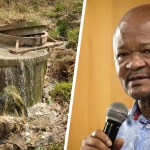
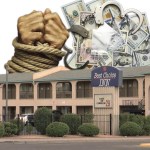
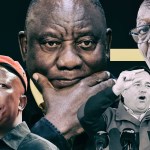
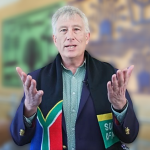

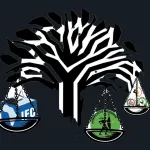

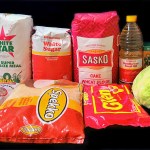









Comments - Please login in order to comment.